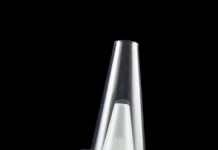In mathematics, the decimal number 0.6 is commonly encountered when dealing with fractions. Understanding the fractional equivalent of 0.6 requires a deep dive into the principles of rational representation. To express 0.6 as a fraction, it is essential to recognize the decimal representation as a division of 6 by 10. This concept is crucial in converting decimal numbers into fractions, allowing for a more comprehensive understanding of numerical relationships.
The fractional form of 0.6 can be determined by examining the decimal place value of each digit in the number. In the case of 0.6, the digit 6 is in the tenths place. This means that the number 0.6 can be interpreted as 6 divided by 10. By simplifying this fraction, we can express 0.6 as 3/5. This process highlights the relationship between the decimal and fractional representations of a number, showcasing the underlying mathematical principles at play.
When exploring the fractional equivalent of 0.6, it is important to consider the properties of rational numbers. Rational numbers are defined as any number that can be expressed as a fraction, where the numerator and denominator are integers and the denominator is not zero. In the case of 0.6, the fractional representation as 3/5 adheres to these criteria, solidifying its status as a rational number.
Furthermore, understanding the connection between decimals and fractions is essential in mathematical problem-solving and real-world applications. Expressing numbers in different forms allows for greater flexibility in calculations and comparisons. For instance, when comparing quantities represented as decimals, converting them into fractions can provide a clearer understanding of their relative sizes and relationships.

In addition, the fractional equivalent of 0.6 can be utilized in various mathematical operations. For example, when adding or subtracting decimals with fractions, converting all numbers into a common form can simplify the calculations and ensure accuracy. By converting 0.6 into 3/5, mathematical operations involving this number become more straightforward and easier to manage.
Moreover, examining the fractional representation of 0.6 sheds light on its properties and characteristics. The fraction 3/5 can be interpreted as a proportion, representing a part-to-whole relationship. In this case, 3 out of 5 parts constitute the whole, illustrating a specific fraction of the total quantity. This insight into the fractional nature of 0.6 enhances our grasp of its numerical significance and application in various contexts.
In conclusion, exploring the fractional equivalent of 0.6 offers valuable insights into the underlying mathematical principles and relationships. By converting 0.6 into the fraction 3/5, we gain a deeper understanding of its rational representation and properties as a rational number. This knowledge not only facilitates mathematical calculations and comparisons but also enhances our overall mathematical literacy and problem-solving skills.





















![InstaPro APK Download Latest Version 2023 [Anti Ban]](https://olo.my.id/wp-content/uploads/2023/10/instapro-100x70.jpg)

